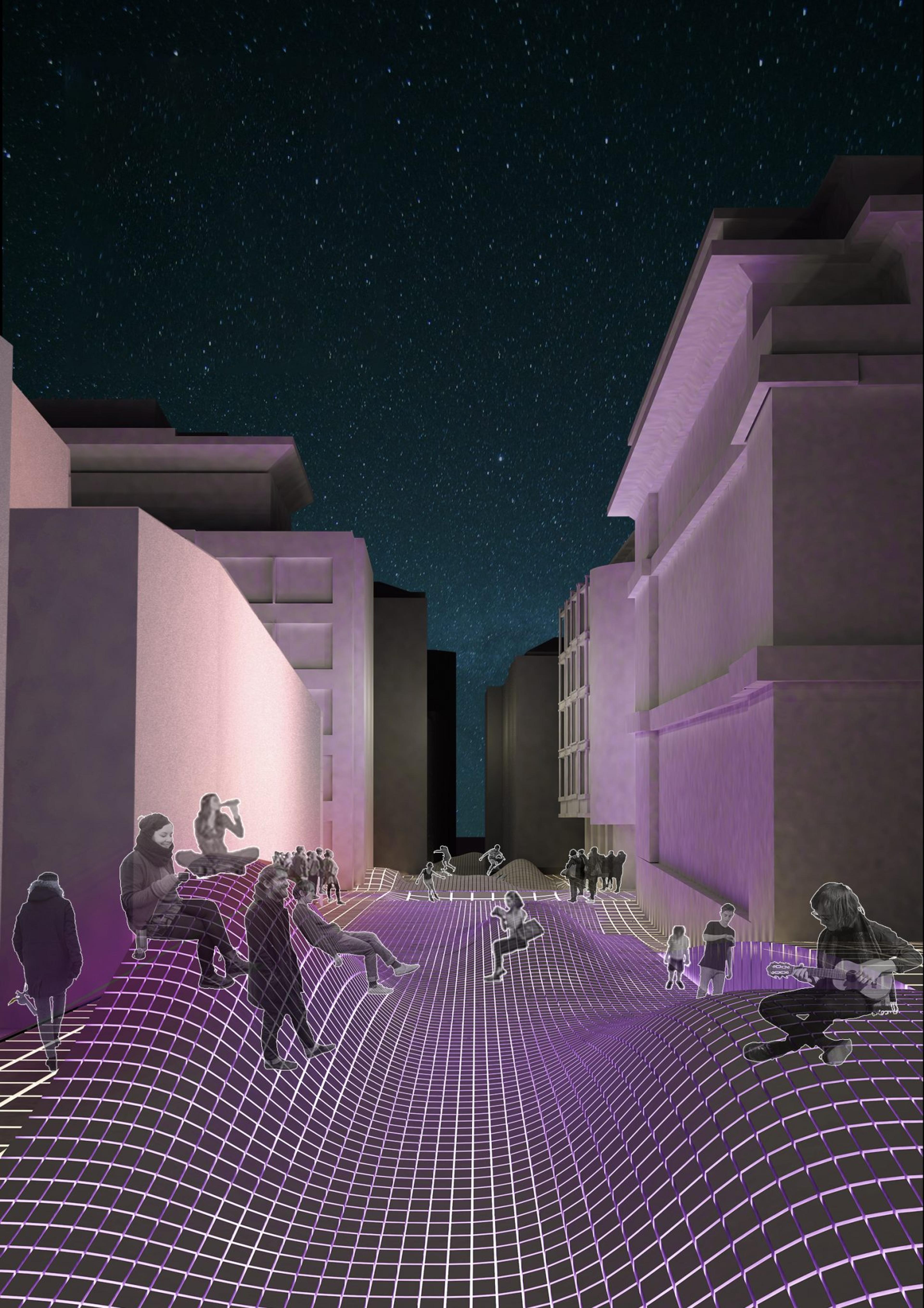Performance
University for the Creative Arts
Janine Antoine, Anastasia Lavrova, Alicia Pell, Oliwia Szatkowska, Nathan Youngs
Our proposal understands performance as a social catalyst – a shared experience that forces people to look up and notice what’s around them. It works as a force against loneliness, a light that can draw away the shadows that loom over urban ghost towns. The proposal assesses the performance of the city, its activities, and its ebbs and flows to determine whether it’s efficiently functioning.
The aim is to optimise the city’s performance by activating dead zones with a responsive intervention that streamlines programmatic occupation and animates the ground plane to enable performances 24 hours a day.
We undertook a spatio-temporal analysis of an active city block in London, which uncovered two use patterns, including large stretches of time where spaces are under-used, particularly on routes outside of main established thoroughfares. Many of the urban blocks in central London are dominated by retail and office uses that are only active during normal working hours. The proposal seeks to activate these routes during lull periods and boost efficiency during peaks.
This is accomplished by retrofitting the existing ground components with an interactive grid broken into pixels that replace the existing street and pavement. When activated, these pixels change in composition and height, forming interventions on the ground level that facilitate circulation, accommodate specific activities and create an environment for performance. The vital city of the future is 24/7.
